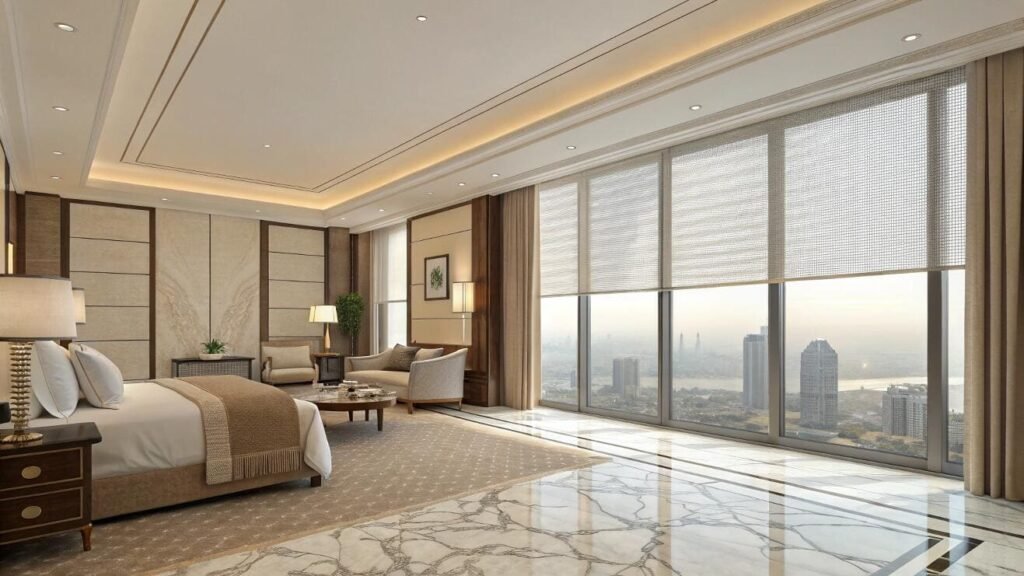You're considering smart blinds for a project, but the higher price tag is a concern. The convenience seems great, but you need to justify the investment to your clients and yourself.
Yes, motorized blinds are worth it for the significant value they add in convenience, energy efficiency[^1], and modern appeal[^2]. While the upfront cost is higher, they can lower HVAC costs and boost property value[^3].
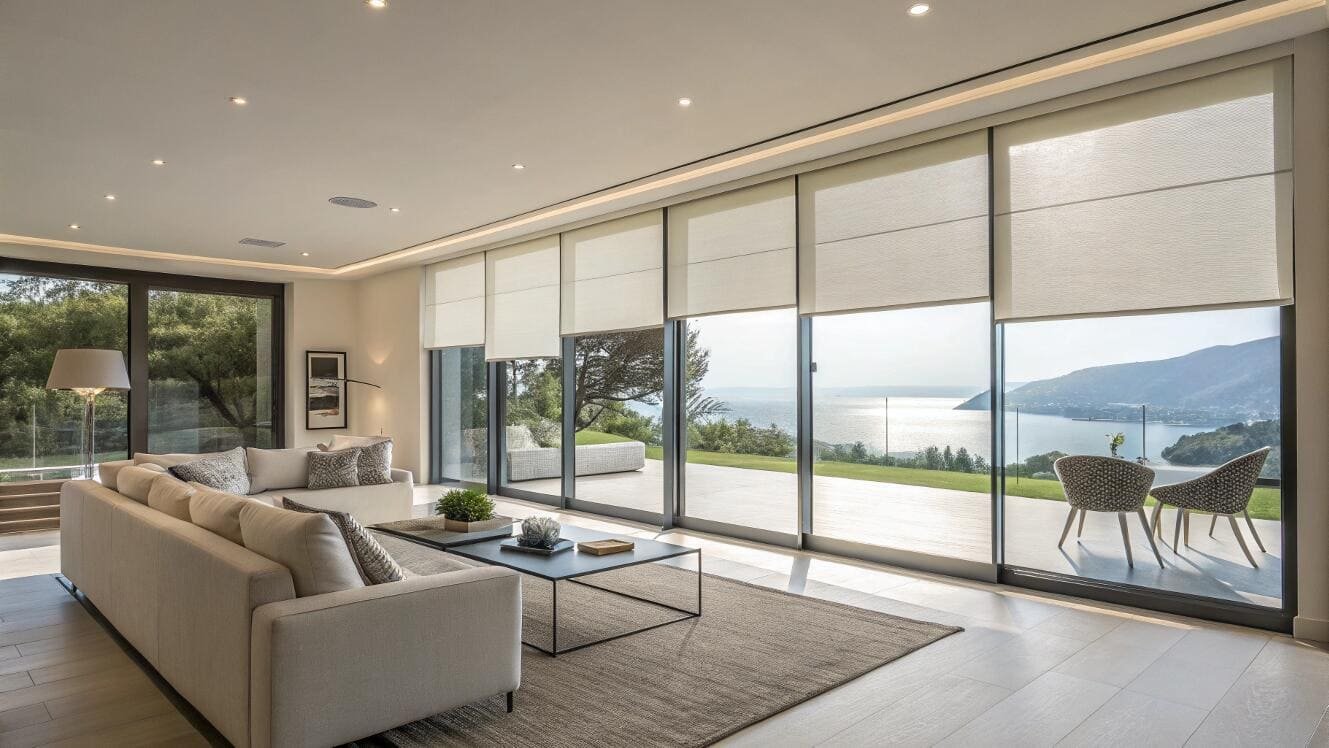
As a supplier, I work with designers like Emma on high-end projects every day. The question of value always comes up. Motorized blinds are more than just a cool gadget; they are an integrated part of a modern building's performance. Automating them to track the sun can lead to real energy savings, and the convenience of controlling every window from one device is a powerful selling point. Let’s break down the real costs and benefits so you can decide if they are the right fit for your next project.
What are the best window blinds for energy efficiency?
High energy bills are a constant problem for your clients. You need a window treatment that actively helps reduce heating and cooling costs, not just one that looks good.
The most energy-efficient blinds are smart, motorized cellular shades[^4] that can be automated. Their unique cellular structure traps air for insulation, and automation can reduce energy costs[^5] by up to 25%.
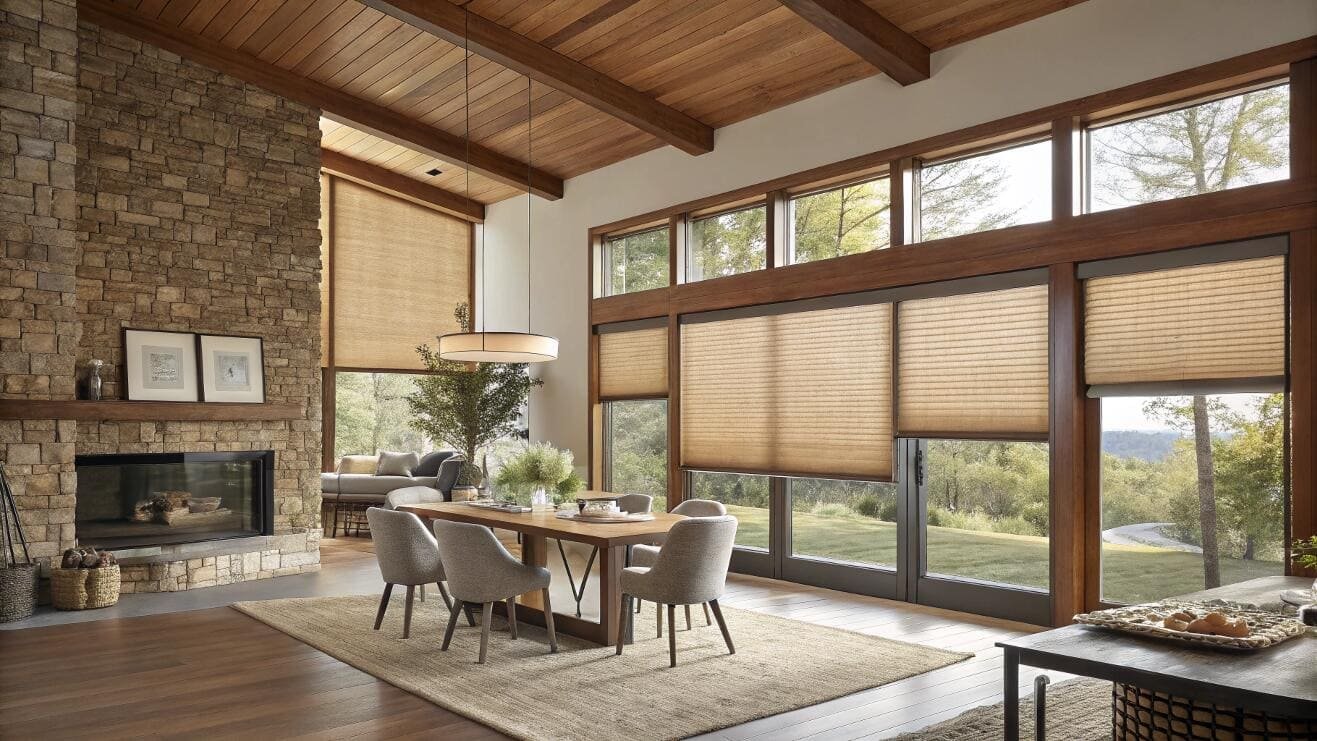
When I'm helping a contractor maximize a building's performance, we always talk about automation. A standard blind only works when someone remembers to adjust it. Motorized cellular shades[^4], on the other hand, can work for you 24/7. I recommend pairing them with a smart home system[^6]. You can then program the blinds to close automatically during the hottest part of a summer day or open to let in passive solar heat in the winter. This simple scheduling can cut HVAC energy use[^7] by up to 25%. The cellular shades themselves are brilliant insulators because their honeycomb pockets trap air, creating a thermal barrier. Combining that physical insulation with smart automation gives you the best possible performance for year-round energy savings.
What are the main disadvantages of motorized blinds?
You love the idea of motorized blinds, but you're worried about hidden problems. Are they reliable? What happens if the power goes out? These are valid concerns before specifying a new system.
The main disadvantages of motorized blinds are the higher upfront cost, a dependency on a power source[^8], and the potential for technical issues[^9] with smart home integration or WiFi connectivity.
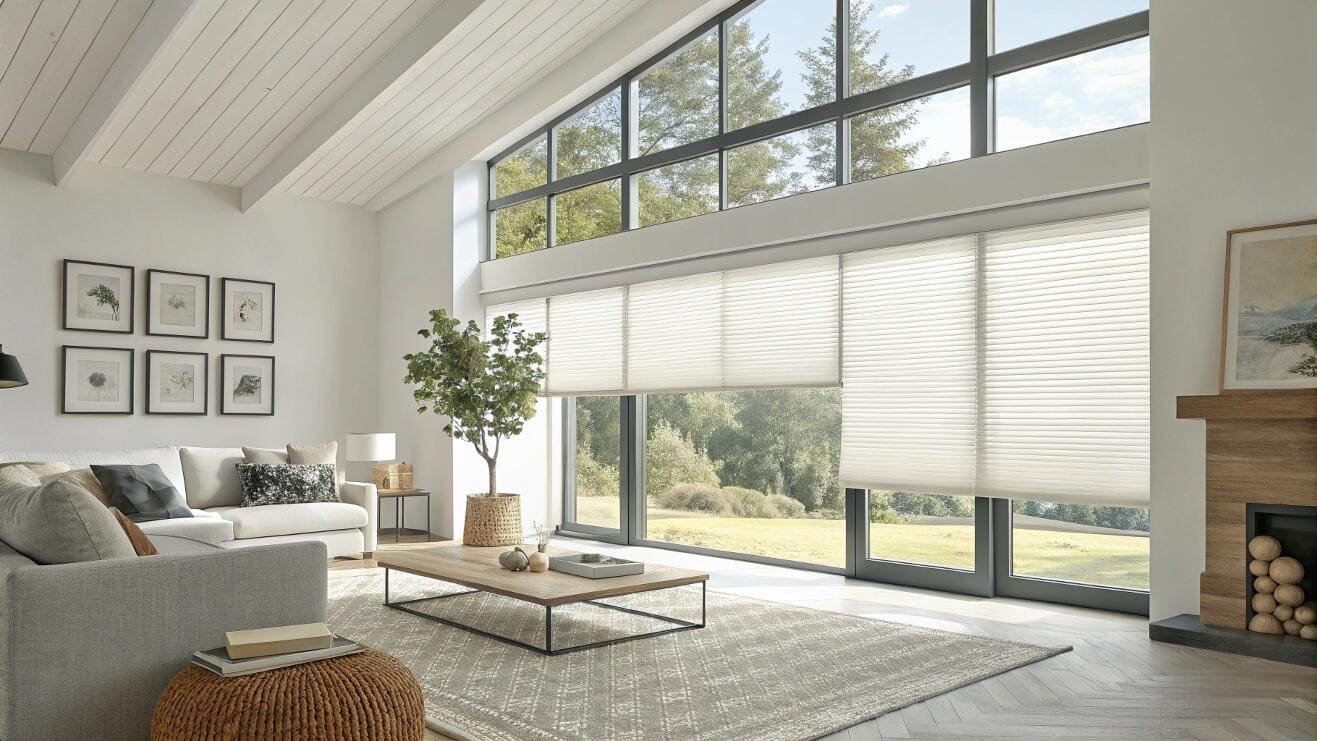
It's important to be realistic. While the benefits are huge, there are limitations to consider. The most obvious is the cost. A motorized blind can be several times more expensive than its manual counterpart. This includes the motor, the controls, and potentially professional installation, especially for hard-wired systems[^10]. Secondly, they need power. If you choose battery-powered blinds, you have to remember to charge them. If you choose hard-wired, they won't work during a power outage unless you have a backup system. Lastly, while smart home integration is a key benefit, it can also be a challenge. Making sure the blinds communicate reliably with your client’s specific smart hub or WiFi network requires careful planning. I always walk my clients through these factors to make sure we select a system that matches their budget and technical comfort level.
Which power source is best and how does it affect cost?
You need to choose a power source for your motorized blinds. The decision will impact the project's budget, installation complexity[^11], and long-term maintenance[^12] requirements for the client.
Battery-powered motors are the easiest and cheapest to install in a retrofit, while hard-wired systems[^10] offer a "set-and-forget" solution but require an electrician. Solar power is a great, eco-friendly compromise.
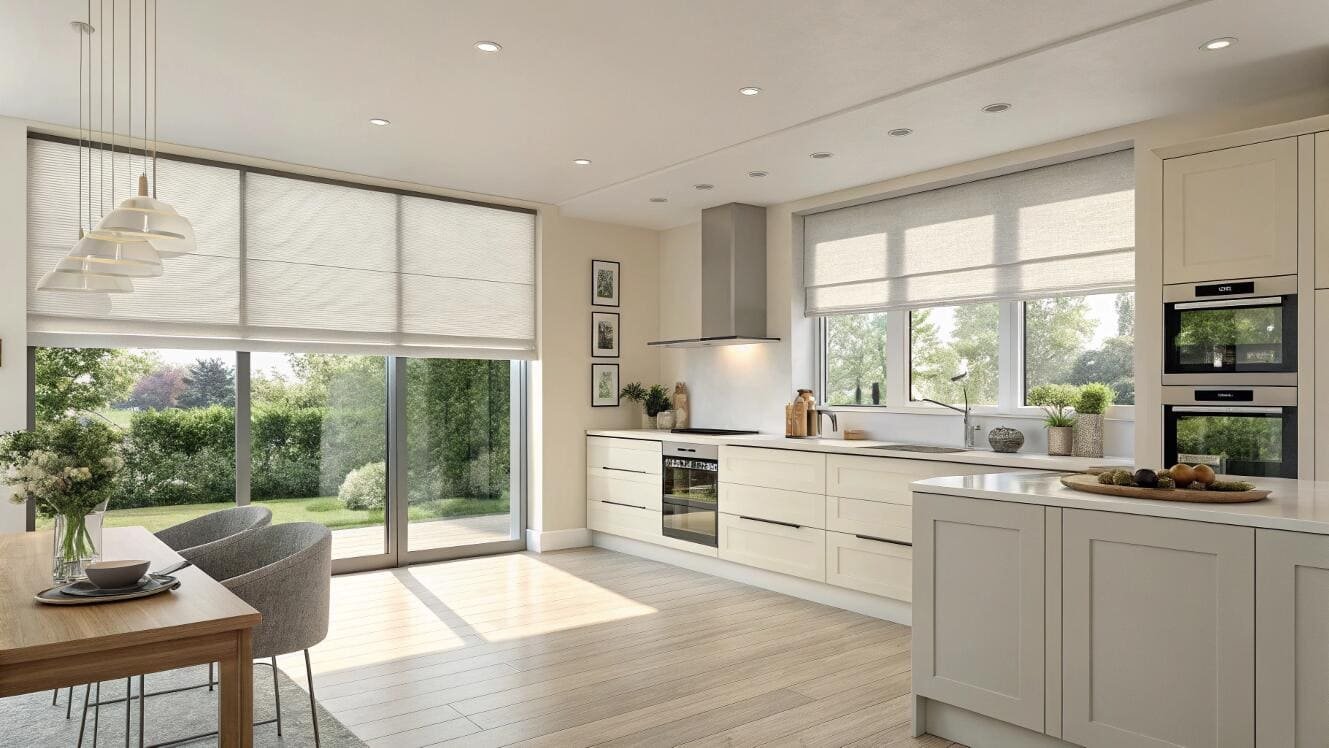
This is a critical decision, and I always create a simple cost-benefit table for my project partners. The power source directly influences the total project cost and the end-user experience. Battery packs are perfect for existing homes because they don't require any new wiring, making installation fast and simple. However, the batteries will need to be recharged every 6-18 months. Hard-wired systems are the gold standard for new construction. They are powered by the home’s electrical system, so there are no batteries to worry about. The downside is that they require an electrician to run the wires, adding to the initial cost. Solar-powered motors are an excellent middle ground, especially for windows with good sun exposure. They use a small panel to keep the battery charged, practically eliminating the need for manual charging.
| Power Source | Installation | Maintenance | Best For |
|---|---|---|---|
| Rechargeable Battery | Easiest; No electrician needed | Recharge every 6-18 months | Retrofits, easy installation |
| Hard-Wired (AC) | Hardest; Requires electrician | None; "set-and-forget" | New construction, reliability |
| Solar-Powered | Easy; Mount panel on window | Minimal; Self-charging | Sunny windows, eco-friendly |
Are solar-powered blinds a good investment?
The idea of solar-powered blinds[^13] is appealing, but you wonder if they really work. Do they get enough power? Are they reliable in different climates, or just a gimmick?
Yes, solar-powered blinds are an excellent investment for windows that receive at least 4-5 hours of direct sunlight per day. They eliminate the need to charge batteries and offer a sustainable, long-term solution.
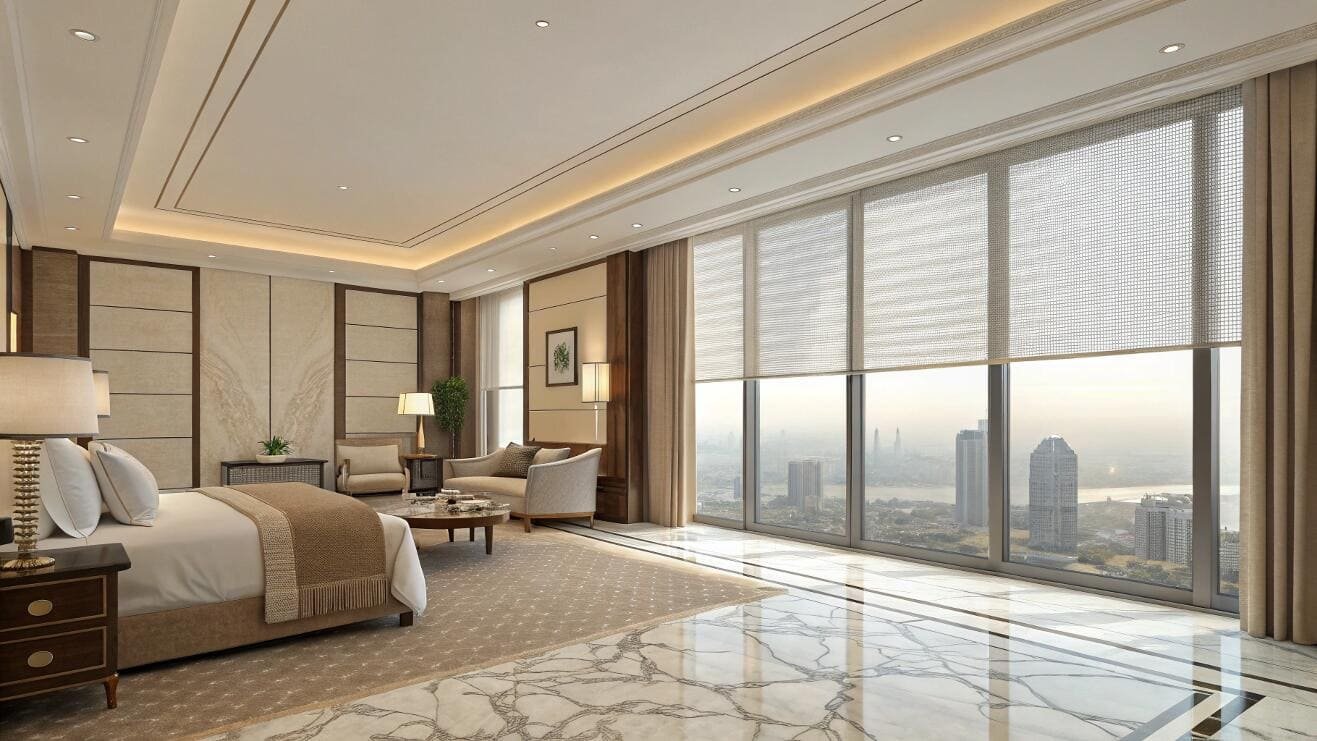
I've seen a big increase in specifications for solar motors, and for good reason. They solve the biggest complaint about battery-powered blinds: having to get out a ladder to recharge them. A small, discreet solar panel attaches to the inside of the window and continuously trickles charge to the motor's battery. As long as the window faces south or west and isn't constantly in shade, the panel will collect more than enough energy for typical daily use. This makes the system virtually maintenance-free. While there is a slightly higher upfront cost for the solar panel, the long-term convenience is a huge selling point for homeowners. It combines the easy installation of a battery system with the "set-and-forget" reliability of a hard-wired one. It's a smart, green upgrade that really pays off.
How long do motorized blinds last?
You're specifying a premium product and your client expects it to last. You need to know the true lifespan and long-term reliability of motorized blinds to manage expectations and ensure satisfaction.
A quality motor for a blind will typically last between 7-10 years with normal use. The fabric and other components of the blind often last even longer, and the motor can be replaced separately if needed.
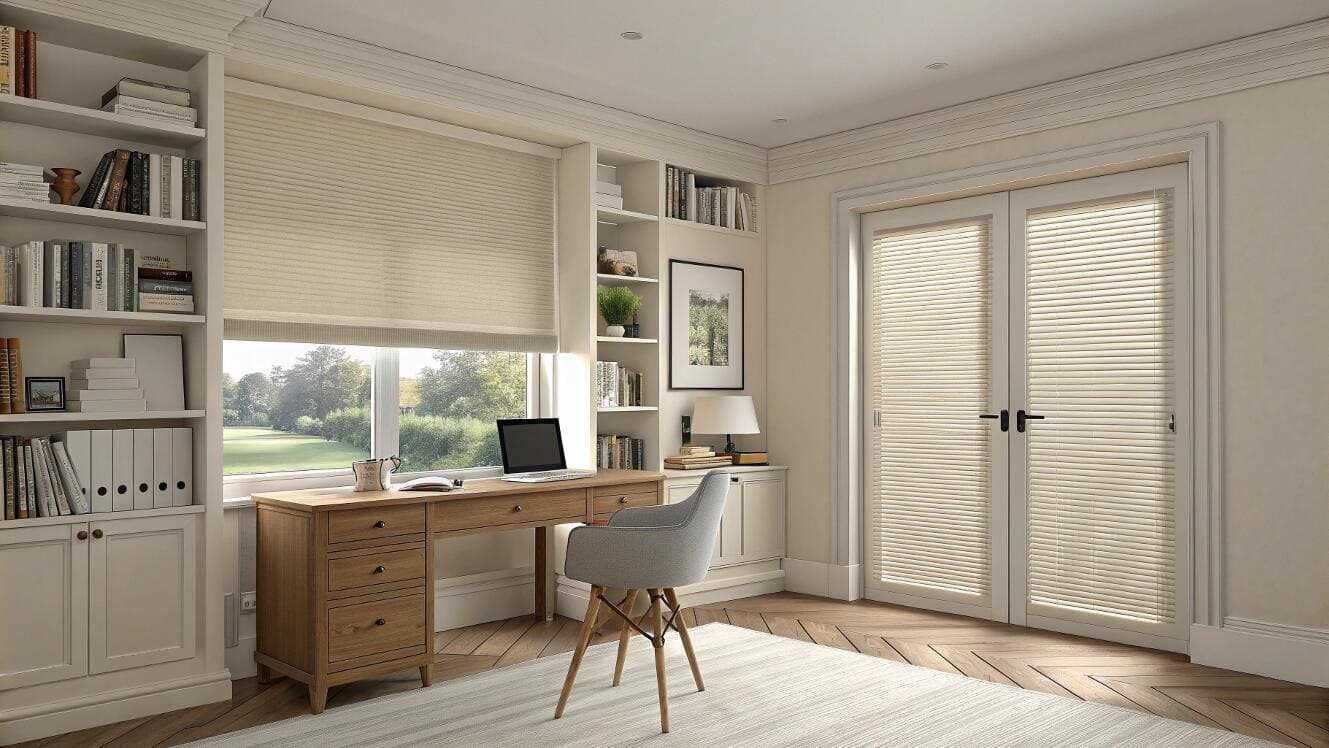
This is an important question for any project manager. The good news is that modern motors from reputable brands are very reliable. I tell my clients to expect a solid 7-10 years of performance. The motors themselves are quiet, usually operating under 45 decibels, which is about as loud as a quiet office. For bedrooms, we can even specify "whisper-quiet" models. When a motor does eventually wear out, you don't have to replace the entire window treatment. The motor is a modular component that can be taken out and replaced, which is much more cost-effective. One of the best parts about modern design is that the battery packs can be hidden inside a cassette valance or behind the headrail, so you get the clean, cordless look without any visible tech.
Conclusion
Motorized blinds are a smart upgrade that provides real value through convenience, safety, and energy savings. By choosing the right power source and system, you can offer clients a modern solution that enhances their space for years.
---
[^1]: Learn about the most energy-efficient blinds that can significantly reduce heating and cooling costs.
[^2]: Discover how motorized blinds enhance the aesthetic and functionality of modern spaces.
[^3]: Learn how investing in motorized blinds can boost the overall value of a property.
[^4]: Understand how cellular shades provide superior insulation and energy savings for your home.
[^5]: Find out how motorized blinds can lead to significant energy savings in your home.
[^6]: Discover how integrating motorized blinds with smart home systems can maximize convenience and energy savings.
[^7]: Find out how automated blinds can help lower HVAC costs and improve energy efficiency.
[^8]: Explore the pros and cons of different power sources for motorized blinds to make an informed decision.
[^9]: Learn about potential technical challenges with motorized blinds and how to address them.
[^10]: Learn why hard-wired systems are considered the gold standard for motorized blinds in new constructions.
[^11]: Explore the factors that influence the installation process of motorized blinds for better planning.
[^12]: Understand the maintenance needs of motorized blinds to ensure longevity and performance.
[^13]: Discover the benefits of solar-powered blinds and how they can provide a sustainable solution.Partner with VelaBlinds for Your Next Project
Smart window treatments shouldn't be complicated. After working with 500+ distributors and contractors worldwide, I've streamlined the process to get you quality products, competitive pricing, and reliable support - every time.
Why project professionals choose VelaBlinds:
- ✅ Fast, Accurate Quotes - Detailed specs and pricing within 24 hours
- ✅ Transparent Pricing - No hidden fees, volume discounts clearly outlined
- ✅ Quality Assurance - Direct partnerships with certified OEM manufacturers
- ✅ Project Support - Dedicated account manager from quote to delivery
Start your next project:
📧 Quick Quote: Send your requirements to info@velablinds.com
📱 Direct Contact: WhatsApp +86 137 2012 8317
🌐 Browse Solutions: https://velablinds.com/
📁 Product Resources: Access spec sheets, catalogs & project files
Paul Chen, Founder
"I built VelaBlinds to solve the real challenges I faced as a project buyer - long lead times, unclear specs, and unreliable suppliers. Let's discuss how we can power your projects with smarter blinds."
Serving distributors and contractors across North America, Europe, and Australia since 2018.

